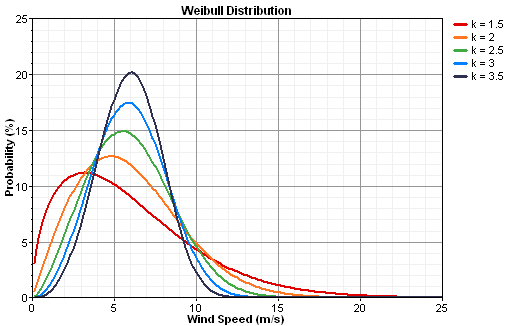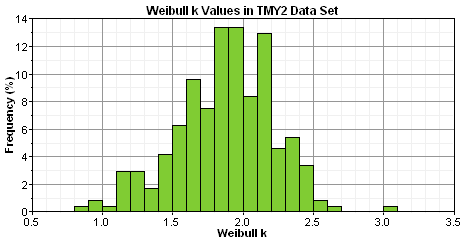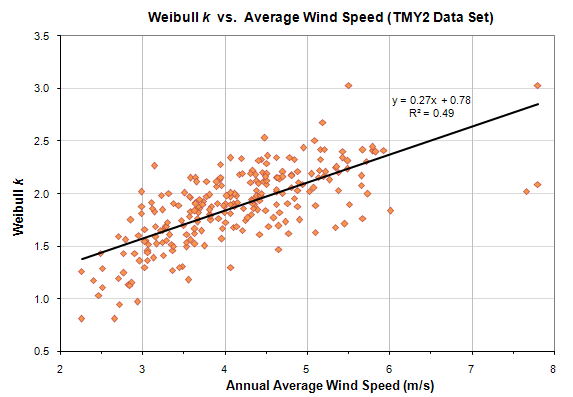
HOMER Grid 1.9

Type: |
Input Variable |
Units: |
none |
Symbol: |
k |
Typical Range: |
1.5 - 2.5 |
The Weibull k value, or Weibull shape factor, is a parameter that reflects the breadth of a distribution of wind speeds. HOMER fits a Weibull distribution to the wind speed data, and the k value refers to the shape of that distribution.
The graph below shows five Weibull distributions, all with the same average wind speed of 6 m/s, but each with a different Weibull k value. As the graph shows, lower k values correspond to broader distributions of wind speed, meaning that winds tend to vary over a large range of speeds. Higher k values correspond to narrower wind speed distributions, meaning that wind speeds tend to stay within a narrow range.

Lower k values correspond to broader wind speed distributions. So a very gusty location may have a Weibull k value as low as 1.5, whereas a location characterized by very steady winds (like tropical trade wind environments) may have a k value as high as 3 or 4. When you synthesize wind speed data, HOMER uses a default Weibull k value of 2, which is typical of many wind scenarios.
When fitting a Weibull distribution to measured wind data, HOMER uses the maximum likelihood method given by Stevens and Smulders, 1979.
To help HOMER users estimate Weibull k values in the absence of measured data, we calculated the best-fit Weibull k value for each of the 239 weather stations in the TMY2 data set. The histogram below shows the resulting distribution of Weibull k values. The measured values themselves appear in the table of measured wind parameters.

In the TMY2 data set, we observed a correlation between the Weibull k value and the average wind speed, with higher annual average wind speeds tending to correspond to lower Weibull k values. The graph below displays this correlation.

See also
